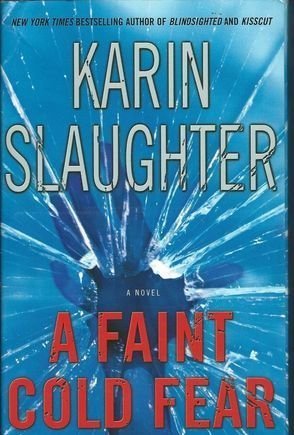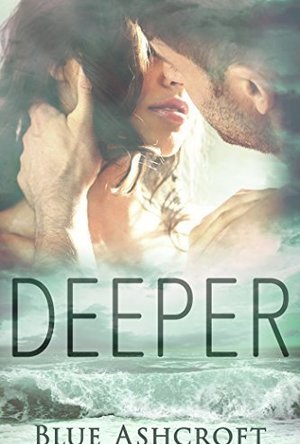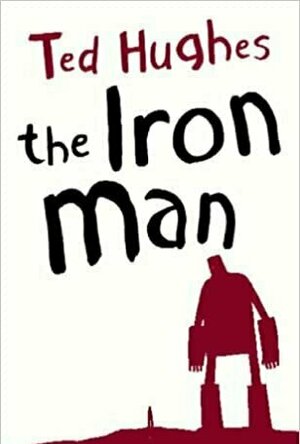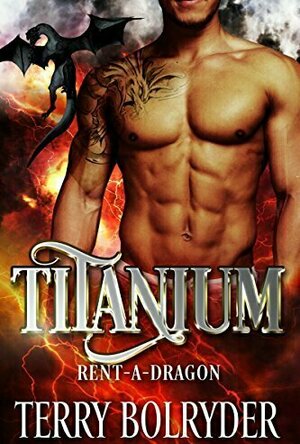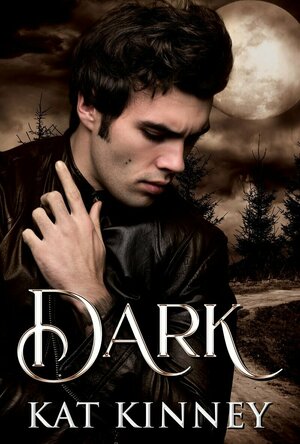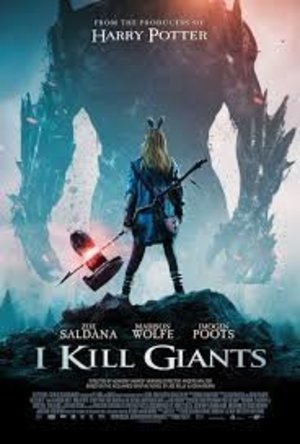Search
Search results
Eleanor (1463 KP) rated A Faint Cold Fear (Grant County, #3) in Books
Jul 13, 2019
Hope this was just a blip in a promising series......
Contains spoilers, click to show
I really enjoyed the first two books in this series so was looking forward to reading this, and I may be guilty of over anticipation as it fell far short of expectations.
It got off to a powerful start but soon turned into a bit of a slog. The previous books felt more story driven, while this more focused on the characters which isn't my ideal. Despite the focus the characters didn't seem to develop. Lena I could do without at this point, yes she's been through a lot and she's not coping well but god make the odd good decision at least, just so frustrating.
Jeffery and Sara's constant bickering followed by making up is tedious, why she wants to get back with the guy is lost on me. When Jeffery looses is because Sara is speaking to an old colleague in a hospital while a loved one is in critical condition made me just want to yell run from him he's a controlling, cheating bastard stop going back to him your a strong woman you don't need that. Updates on the critically injured sister just got stupid how many times was it just "she's doing better" without really addressing what was going on with her just seemed odd, we got more detail on how long and much traffic there was on the way to the hospital.
The main plot just never caught on for me and the investigation just lacked any sense of urgency or intrigue.
I'll be continuing with the series hoping this one was a blip and we return to stronger stories.
It got off to a powerful start but soon turned into a bit of a slog. The previous books felt more story driven, while this more focused on the characters which isn't my ideal. Despite the focus the characters didn't seem to develop. Lena I could do without at this point, yes she's been through a lot and she's not coping well but god make the odd good decision at least, just so frustrating.
Jeffery and Sara's constant bickering followed by making up is tedious, why she wants to get back with the guy is lost on me. When Jeffery looses is because Sara is speaking to an old colleague in a hospital while a loved one is in critical condition made me just want to yell run from him he's a controlling, cheating bastard stop going back to him your a strong woman you don't need that. Updates on the critically injured sister just got stupid how many times was it just "she's doing better" without really addressing what was going on with her just seemed odd, we got more detail on how long and much traffic there was on the way to the hospital.
The main plot just never caught on for me and the investigation just lacked any sense of urgency or intrigue.
I'll be continuing with the series hoping this one was a blip and we return to stronger stories.
Leanne Crabtree (480 KP) rated Deeper in Books
Sep 6, 2019
I think this is the first life-guard story I've ever read. It was an insightful look into training and procedures they have to go through when rescuing people as well as covering some more serious issues such as accidents, whirl-pooling and other things you don't always realise happen at water parks.
I have to say I loved how they went mini-golfing. First time I've read that in a book (I think, anyway). The extra game Knight added into it made it more fun, though it didn't last too long...
Both characters, Rain and Knight, have both lost people they cared about in the past and are wary of new relationships but they find themselves unable to stay away from each other. We see flashbacks of both their previous relationships and how they both ended terribly sadly and how badly it affected them; Rain saying she will never love again and wanting to protective everyone, whether that puts her own life in danger or not, and Knight being extremely over-protective of her.
I cant entirely blame Knight though because Rain seems to get herself into really stupid situations all the time and he always come to her rescue. Like a real life Knight in shining armour :P
Another scene I liked was the kissing under water. It sounds very romantic and I like the graphic used in another review of the book on GoodReads.
Knight was cool, though his over-protectiveness was a little annoying in places, though totally warranted. Rain on the other hand, to me, came across as being a pain in the butt, always pulling the plug on their fledgling relationship.
Overall it was an okay read. Short but sweet dark, because something bad was always happening to someone or other.
I have to say I loved how they went mini-golfing. First time I've read that in a book (I think, anyway). The extra game Knight added into it made it more fun, though it didn't last too long...
Both characters, Rain and Knight, have both lost people they cared about in the past and are wary of new relationships but they find themselves unable to stay away from each other. We see flashbacks of both their previous relationships and how they both ended terribly sadly and how badly it affected them; Rain saying she will never love again and wanting to protective everyone, whether that puts her own life in danger or not, and Knight being extremely over-protective of her.
I cant entirely blame Knight though because Rain seems to get herself into really stupid situations all the time and he always come to her rescue. Like a real life Knight in shining armour :P
Another scene I liked was the kissing under water. It sounds very romantic and I like the graphic used in another review of the book on GoodReads.
Knight was cool, though his over-protectiveness was a little annoying in places, though totally warranted. Rain on the other hand, to me, came across as being a pain in the butt, always pulling the plug on their fledgling relationship.
Overall it was an okay read. Short but sweet dark, because something bad was always happening to someone or other.

Crowman & Wolfboy
Games
App
"The perfect union of a platformer and an endless runner" - IGN Italy (8.5/10) "I really can’t...
Ivana A. | Diary of Difference (1171 KP) rated The Iron Man in Books
Aug 3, 2020
<a href="https://amzn.to/2Wi7amb">Wishlist</a>; | <a
<a href="https://diaryofdifference.com/">Blog</a>; | <a href="https://www.facebook.com/diaryofdifference/">Facebook</a>; | <a href="https://twitter.com/DiaryDifference">Twitter</a>; | <a href="https://www.instagram.com/diaryofdifference/">Instagram</a>; | <a href="https://www.pinterest.co.uk/diaryofdifference/pins/">Pinterest</a>;
<img src="https://diaryofdifference.com/wp-content/uploads/2020/05/Book-Review-Banner-41.png"/>;
I chose to read The Iron Man by Ted Hughes as part of my Potions prompt for my OWLs Readathon in April. I am very glad I picked it up, because it was such a pleasant short read.
This is a Children's book about a little boy an an iron man. The Iron Man starts eating all the metal in the town, and the concerned town members capture him. But when a bigger danger comes around, the might need the help of the Iron Man after all.
The book was beautifully written and it had many illustrations that supported the story. Illustrations are always something I truly admire. These may have been a bit too grim for me though.
The writing is very smooth and easy to digest. I believe that it is able to spark a child's imagination and curiosity. The book is entangled in bravery, friendships and adventure, and I am certain that it will be a child's dear friend forever, should they read it once.
I recommend watching the 1999 animated movie The Iron Giant after reading the book, for better enjoyment.
<a href="https://amzn.to/2Wi7amb">Wishlist</a>; | <a
<a href="https://diaryofdifference.com/">Blog</a>; | <a href="https://www.facebook.com/diaryofdifference/">Facebook</a>; | <a href="https://twitter.com/DiaryDifference">Twitter</a>; | <a href="https://www.instagram.com/diaryofdifference/">Instagram</a>; | <a href="https://www.pinterest.co.uk/diaryofdifference/pins/">Pinterest</a>;
<a href="https://diaryofdifference.com/">Blog</a>; | <a href="https://www.facebook.com/diaryofdifference/">Facebook</a>; | <a href="https://twitter.com/DiaryDifference">Twitter</a>; | <a href="https://www.instagram.com/diaryofdifference/">Instagram</a>; | <a href="https://www.pinterest.co.uk/diaryofdifference/pins/">Pinterest</a>;
<img src="https://diaryofdifference.com/wp-content/uploads/2020/05/Book-Review-Banner-41.png"/>;
I chose to read The Iron Man by Ted Hughes as part of my Potions prompt for my OWLs Readathon in April. I am very glad I picked it up, because it was such a pleasant short read.
This is a Children's book about a little boy an an iron man. The Iron Man starts eating all the metal in the town, and the concerned town members capture him. But when a bigger danger comes around, the might need the help of the Iron Man after all.
The book was beautifully written and it had many illustrations that supported the story. Illustrations are always something I truly admire. These may have been a bit too grim for me though.
The writing is very smooth and easy to digest. I believe that it is able to spark a child's imagination and curiosity. The book is entangled in bravery, friendships and adventure, and I am certain that it will be a child's dear friend forever, should they read it once.
I recommend watching the 1999 animated movie The Iron Giant after reading the book, for better enjoyment.
<a href="https://amzn.to/2Wi7amb">Wishlist</a>; | <a
<a href="https://diaryofdifference.com/">Blog</a>; | <a href="https://www.facebook.com/diaryofdifference/">Facebook</a>; | <a href="https://twitter.com/DiaryDifference">Twitter</a>; | <a href="https://www.instagram.com/diaryofdifference/">Instagram</a>; | <a href="https://www.pinterest.co.uk/diaryofdifference/pins/">Pinterest</a>;
Lyndsey Gollogly (2893 KP) rated Titanium (Rent-a-Dragon #3) in Books
Aug 6, 2020
Contains spoilers, click to show
141 of 200
Kindle
Titanium ( Rent a Dragon book 3)
By Terry Bolryder
A dragon contractor? Expensive.
Unless you're the woman Titus Kroll just fell madly in love with. As a decisive, capable, and newly awakened metal dragon, Titus is used to seeing what he wants and going after it. Right now that's Bree Durell, a sweet, curvy woman who needs help with her house badly and can't afford to pay. Still, his heart says she's his mate, and no matter the price, he's ready to serve her every need, whether that's repairing her home, healing her heart, or restoring her trust.
Bree Durell isn't looking for romance. She has enough on her plate with a crazed stalker, a clumsy but adorable dog, and a house that's falling apart around her and too expensive to repair. Though there is instant attraction when she sees Titus in all his tall, blue-eyed, muscular glory at Rent-A-Dragon, she's sure she can't afford his fee. So when Titus shows up on her doorstep with an offer she can't refuse, she vows she will only keep things professional, no matter how wickedly talented he might be with his hands.
As Titus and Bree work in close quarters, sharing a home and a few steamy encounters, there are big threats circling. From an ancient friend-turned-enemy, to rogue dragons obsessed with vengeance, Titus is going to have his hands full if he wants to protect his newly-built life.
The last book in this trilogy and we finally see our last brother mated! Titus is my favourite I think. Another short story giving us more shifter fun! Nice to see the precious metal dragons finding some truth and ready to be trained and hopefully find their mates too!
Kindle
Titanium ( Rent a Dragon book 3)
By Terry Bolryder
A dragon contractor? Expensive.
Unless you're the woman Titus Kroll just fell madly in love with. As a decisive, capable, and newly awakened metal dragon, Titus is used to seeing what he wants and going after it. Right now that's Bree Durell, a sweet, curvy woman who needs help with her house badly and can't afford to pay. Still, his heart says she's his mate, and no matter the price, he's ready to serve her every need, whether that's repairing her home, healing her heart, or restoring her trust.
Bree Durell isn't looking for romance. She has enough on her plate with a crazed stalker, a clumsy but adorable dog, and a house that's falling apart around her and too expensive to repair. Though there is instant attraction when she sees Titus in all his tall, blue-eyed, muscular glory at Rent-A-Dragon, she's sure she can't afford his fee. So when Titus shows up on her doorstep with an offer she can't refuse, she vows she will only keep things professional, no matter how wickedly talented he might be with his hands.
As Titus and Bree work in close quarters, sharing a home and a few steamy encounters, there are big threats circling. From an ancient friend-turned-enemy, to rogue dragons obsessed with vengeance, Titus is going to have his hands full if he wants to protect his newly-built life.
The last book in this trilogy and we finally see our last brother mated! Titus is my favourite I think. Another short story giving us more shifter fun! Nice to see the precious metal dragons finding some truth and ready to be trained and hopefully find their mates too!
Debbiereadsbook (1611 KP) rated Dark (Blood Moon, Texas Shifters #1) in Books
May 25, 2020
something not quite right, but not sure what!
Independent reviewer for Archaeolibrarian, I was gifted my copy of this book.
I finished this book, so that's a good thing!
I can't say what didn't quite work for me, I hate that I can't, you all know it annoys me so!
The world building is good, with werewolves and vampires exposed to the world a short time ago, in a thoroughly modern way!
Hayden and Ethan have history, I was expecting that history to be a bit more than it appeared to be. Ethan's personal history is bad, as is Hayden's, both of them having difficult childhoods. There is much angst about their childhoods.
Or there SHOULD have been. While Ethan regularly comments on what his childhood did to him, how he closed off from everyone, Hayden does not. I wanted MORE from Hayden about her childhood!
Ethan brothers held more interest to me, than Etahn himself, I'm afraid and I would like to have had a bit more about them. I can see a pairing between one of his brothers and Hayden's sister, Ellie. Who, in my humble opinion, needed a slap a time or two!
There is a back story that kinda got lost on me, and I wasn't sure what the whole point of the kidnappings was, to be honest. It tells you, in the book, but the penny did not drop for me, I'm afraid.
Some sexy bits, although much of those are glanced over, off screen as it were. Some violent bits too.
Still, as the first by this author AND a first in series, not a bad read, just not one that really pushed any of my buttons, I'm sorry to say!
3 good stars
**same worded review will appear elsewhere**
I finished this book, so that's a good thing!
I can't say what didn't quite work for me, I hate that I can't, you all know it annoys me so!
The world building is good, with werewolves and vampires exposed to the world a short time ago, in a thoroughly modern way!
Hayden and Ethan have history, I was expecting that history to be a bit more than it appeared to be. Ethan's personal history is bad, as is Hayden's, both of them having difficult childhoods. There is much angst about their childhoods.
Or there SHOULD have been. While Ethan regularly comments on what his childhood did to him, how he closed off from everyone, Hayden does not. I wanted MORE from Hayden about her childhood!
Ethan brothers held more interest to me, than Etahn himself, I'm afraid and I would like to have had a bit more about them. I can see a pairing between one of his brothers and Hayden's sister, Ellie. Who, in my humble opinion, needed a slap a time or two!
There is a back story that kinda got lost on me, and I wasn't sure what the whole point of the kidnappings was, to be honest. It tells you, in the book, but the penny did not drop for me, I'm afraid.
Some sexy bits, although much of those are glanced over, off screen as it were. Some violent bits too.
Still, as the first by this author AND a first in series, not a bad read, just not one that really pushed any of my buttons, I'm sorry to say!
3 good stars
**same worded review will appear elsewhere**
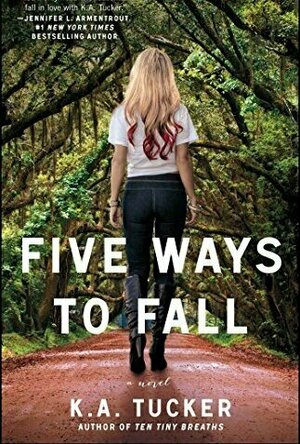
Five Ways to Fall (Ten Tiny Breaths, #4)
Book
Sometimes you can’t change—and sometimes you just don’t want to. Read Ben’s side of the Ten...
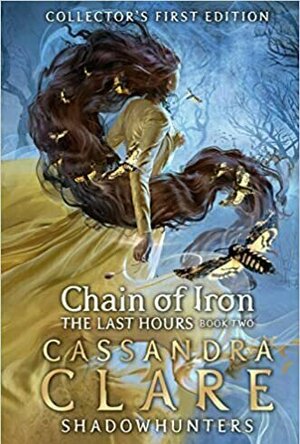
Chain of Iron
Book
The Collector's First Edition features ten black-and-white character silhouettes by celebrated...
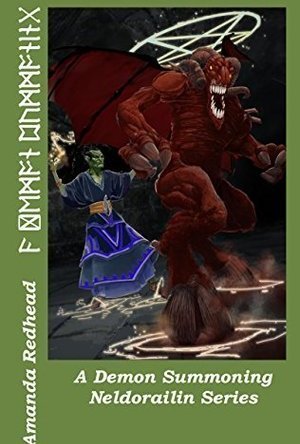
A Demon Summoning: Neldorailin Series
Book
For ages, the peoples of Neldorailin had been drawn to the Druid's Stone. Some, for the druids...
